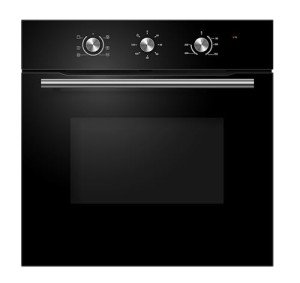The Comprehensive Guide to Built-In Cookers and Hobs
Built-in cookers and hobs have ended up being increasingly popular in modern-day kitchen areas, providing both functionality and visual appeal. learn more integrated appliances, developed to fit flawlessly into kitchen cabinetry, maximize space while boosting the cooking experience. This post will check out the various kinds of built-in cookers and hobs, their advantages, upkeep tips, and regularly asked concerns.
Understanding Built-In Cookers and Hobs
Built-in cookers usually consist of ovens, while hobs refer to the cooking surface that can include various heating elements such as burner, electric coils, or induction zones. When integrated, these two appliances create an efficient and structured cooking setup.
Kinds Of Built-In Cookers and Hobs
When choosing a built-in cooker and hob, it's vital to understand the numerous types readily available. Here's a comprehensive table comparing the primary types:
| Type | Description | Pros | Cons |
|---|---|---|---|
| Gas Hob | Utilizes gas as a fuel source. | Quick heat change, cooking control. | Requires gas line installation. |
| Electric Hob | Utilizes electric coils or solid plate heating. | Generally less pricey, easy to tidy. | Slower to heat and cool off. |
| Induction Hob | Utilizes electromagnetic energy for cooking. | Fast heating, energy-efficient, safe. | Pricey, needs suitable pots and pans. |
| Built-In Oven | Can be electric, gas, or mix. | Flexible cooking choices, different sizes. | Fixed place, prospective installation complexity. |
Advantages of Built-In Cookers and Hobs
- Space-Saving Design: Built-in systems save space by integrating flawlessly into the kitchen layout, leaving more space for storage and counter tops.
- Visual Appeal: They supply a smooth and modern look, raising the design of any kitchen.
- Personalization: With various styles and configurations, house owners can choose appliances that best suit their cooking habits and kitchen measurements.
- Boosted Functionality: Built-in cookers typically include advanced functions such as self-cleaning options, several cooking modes, and programmable timers.
- Safety Features: Modern hobs incorporate functions like automatic shut-off and kid locks, enhancing security in the kitchen.
Maintenance Tips for Built-In Cookers and Hobs
To guarantee the longevity and optimal efficiency of built-in cookers and hobs, proper maintenance is necessary. Below are crucial maintenance ideas:
- Regular Cleaning: Wipe spills and stains immediately to avoid them from solidifying or ending up being more difficult to clean up.
- Use Appropriate Cleaning Supplies: Avoid abrasive products that can scratch surfaces. Use cleaner particularly created for the kind of appliance you have.
- Inspect Gas and Electrical Connections: Regular inspections can avoid leakages and guarantee optimum efficiency.
- Adjust Temperature Settings: If you see disparities in cooking temperatures, consider recalibrating the oven.
- Set Up Professional Servicing: Annual check-ups can assist identify and remedy minor problems before they escalate.
Choosing the Right Built-In Cooker and Hob
When selecting a built-in cooker and hob, several elements must be thought about:
1. Cooking Preferences:
- If you take pleasure in quick temperature level adjustments, a gas hob may be perfect.
- For energy efficiency and consistent cooking, induction hobs are preferred.
2. Kitchen Size:
- Consider the space readily available for installation. Procedure cabinets and other appliances to guarantee the selected system fits comfortably.
3. Style and Design:
- Opt for styles that match your kitchen's decoration. Built-in systems been available in different surfaces, such as stainless steel, black, or custom-made cabinetry.
4. Budget:
- Establish a spending plan that consider purchase expenses, setup fees, and long-lasting operating costs.
5. Brand name Reputation:
- Research reliable brands known for dependability and customer service. Reading evaluations and seeking suggestions can also be handy.
Often Asked Questions (FAQs)
Q1: Are built-in cookers and hobs more costly than traditional systems?A1: Generally, built-in cookers and hobs can be more expensive upfront due to installation and design. However, they may provide long-lasting cost savings through energy effectiveness.
Q2: Can I set up a built-in cooker or hob myself?A2: While some may be installed by house owners, it is frequently suggested to work with a professional, particularly for gas or complex electrical connections, to ensure security and compliance with local codes.
Q3: What is the average lifespan of built-in cookers and hobs?A3: With correct care, built-in cookers and hobs can last anywhere from 10 to 15 years. Routine maintenance can extend their life.
Q4: Is it possible to integrate various types of hobs with the exact same oven?A4: Yes, numerous kitchens include a mix of hobs (e.g., gas and induction) alongside a built-in oven, allowing for versatile cooking choices.
Q5: How do I know if my hob is energy-efficient?A5: Look for energy efficiency rankings and think about induction hobs, which usually provide superior energy efficiency compared to gas or standard electric hobs.
Built-in cookers and hobs use a blend of modern style and advanced cooking innovation, improving any kitchen's performance and style. By comprehending the various types offered, their benefits, and upkeep requirements, house owners can make informed decisions when purchasing these important kitchen appliances. With proper selection and care, built-in cookers and hobs can supply years of pleasurable cooking and a seamless kitchen experience.

